When you have an air exchanger installed in your home, you need to know how to clean it as part of its proper maintenance. This way, you can expect it to function smoothly as it does its job efficiently and effectively. This is what we will talk about in this article. We asked for the help of the experts on how to accomplish this task, and here's what we learned from them.
To clean your air exchanger, you need to:
- Turn off the appliance.
- Remove the core and secondary filters inside the housing.
- Vacuum the core and filters.
- Soak them in warm soapy water for a couple of hours.
- Rinse and dry.
- While waiting for the filters to dry, clean the interior of the air exchanger housing unit.
- Remove loose dirt from the air ducts.
- Vacuum the interior components as well as the ducts and fan.
- Wipe the interior surface to remove the remaining dirt.
- When the core and filters are finally dry, reassemble them inside the housing.
Keep on reading to know more details about the proper cleaning and maintenance of your air exchanger unit. We'll also talk about how often you should clean your air exchanger filter and if it's a good idea to leave it on all the time. Let's get to work!
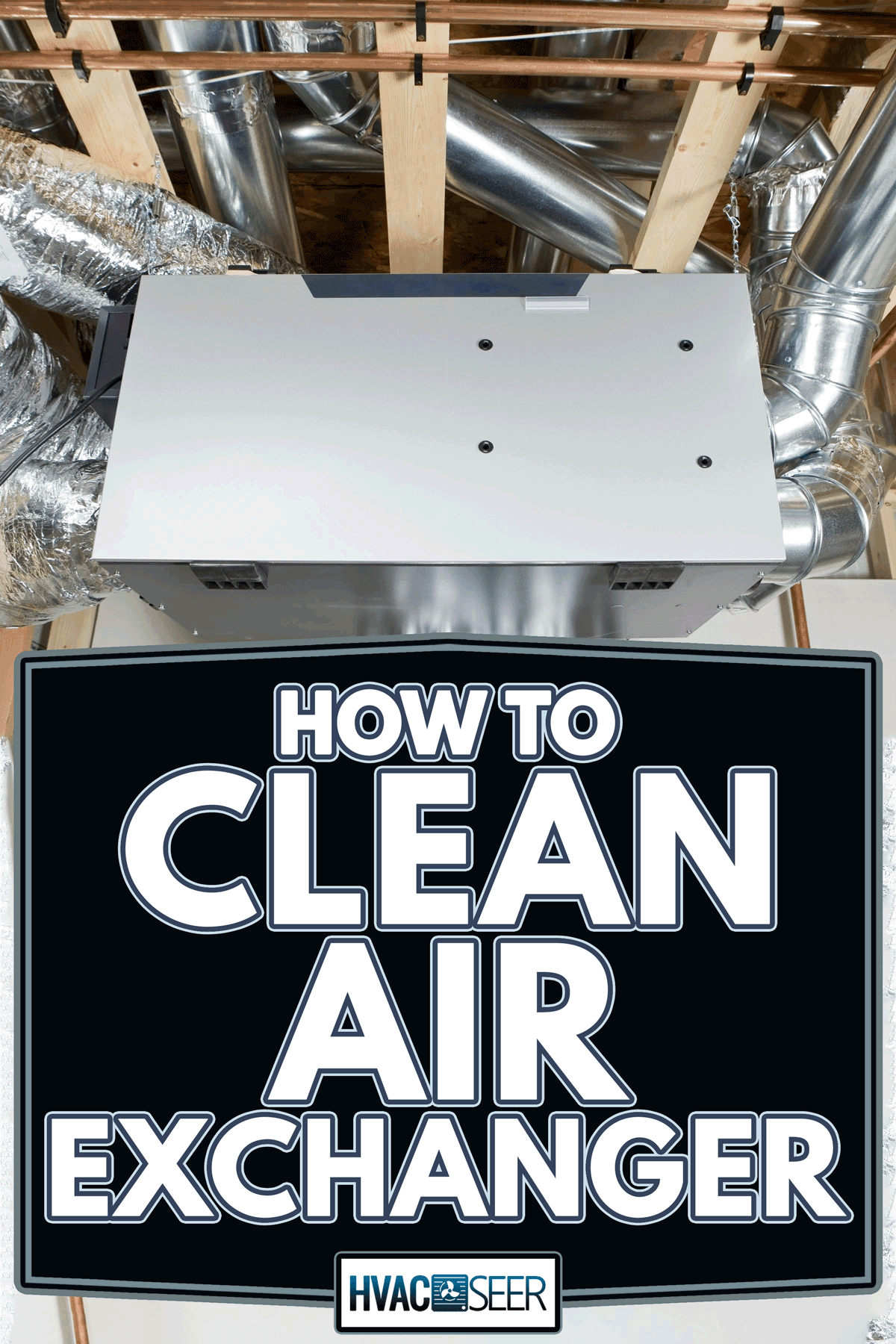
Air Exchangers and Their Maintenance
You might not be aware of this, but many of our indoor activities generate pollutants in the air. When we cook, some odors and aromas linger in the air. When we clean, dust particles float in the air.
When we keep furry friends inside our homes, their pet dander can contribute to contaminants in our indoor air. All these pollutants can get trapped inside our homes unless we find ways to filter them out.
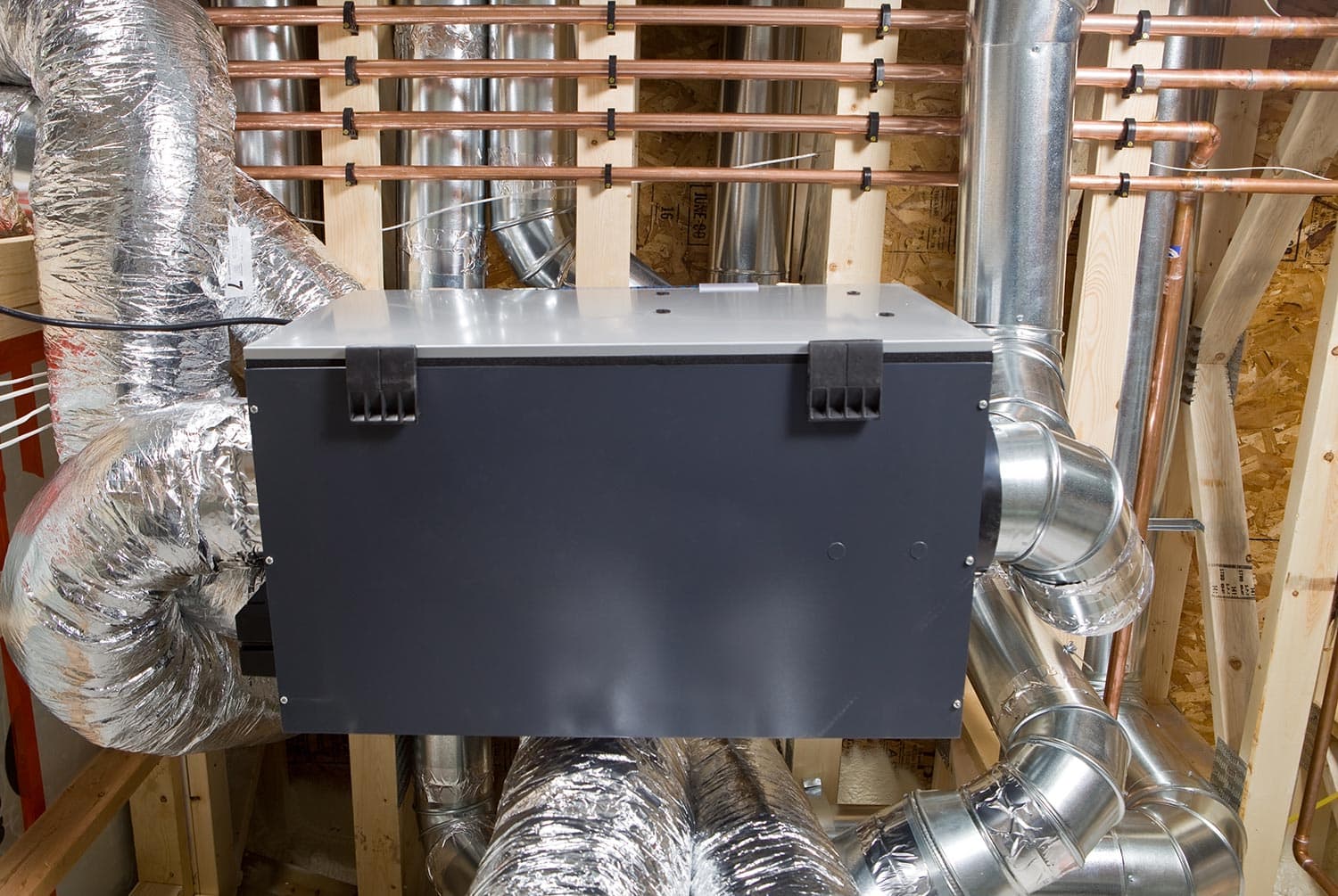
Air exchangers are one of the appliances that can help improve your indoor air quality. They remove stale air indoors to help get rid of foul smells. They also suck humid air and bring in fresh air from the outside so that there's continuous airflow.
This ventilation helps in maintaining the humidity level inside homes within the ideal range. In turn, this would prevent the growth of mold and mildew.
While doing these things, air exchangers also filter contaminants in the air so that they won't get mixed with the air that you breathe. In effect, they make homes cleaner and healthier.
But of course, their filters and other parts will also get dirty over time as they try to eliminate the pollutants in our surroundings. When the filters are full of dirt, they won't be able to allow fresh and clean air to pass through. When the ducts and pipes are also dirty, they will contaminate the air that passes through them.
That's why it is important to clean them regularly so that they can do their job effectively.
How to Clean the Air Exchanger Filters
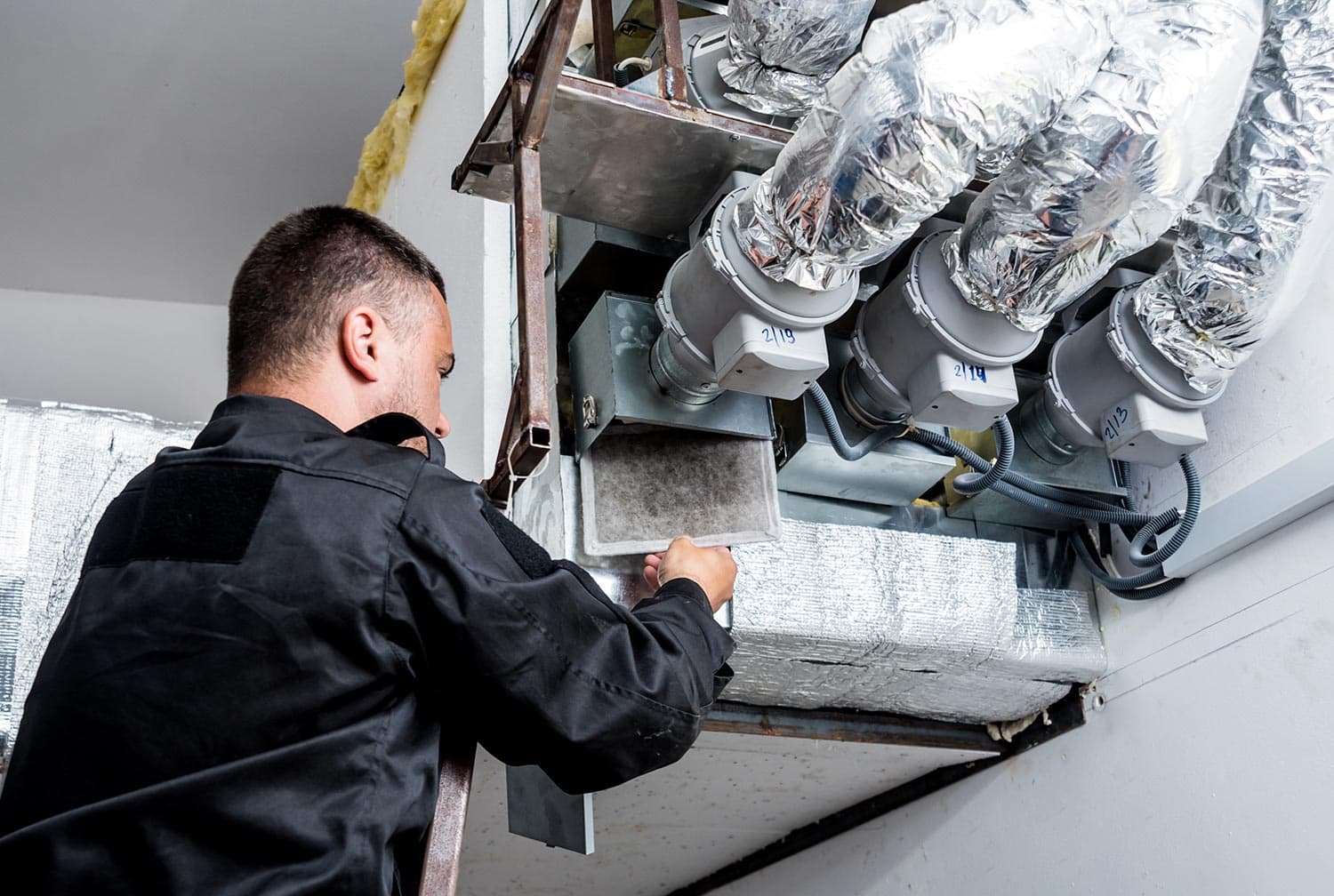
- Turn off the appliance and unplug from the power outlet. This is for your safety.
- Open the access door. Some prefer to remove the door from the hinges so that they can work on the unit without any inconvenience.
- Remove the core filter or the diamond core at the center of the air exchanger unit.
- Detach the secondary filters at the end of the supply and return air ducts, respectively.
- Vacuum the core and secondary filters.
- Fill your utility tub or bathtub with warm soapy water. Only use mild soap for this.
- Soak the core and secondary filters in the tub.
- Leave them in the tub for at least two hours to loosen the dirt.
- Rinse off the soap and gunk with clean water.
- Allow them to dry completely before putting them back inside the ventilation house.
How to Clean the Air Exchanger, Ducts, and Pipes

While waiting for the filters to dry, you can now clean the interior of your air exchanger unit and its air ducts.
- Use a toilet brush to clean the walls and interior of the supply and return air ducts.
- Vacuum the interior of the air exchanger. Run the vacuum through the fans and ducts as well.
- Using a dry cloth or paper towel, wipe the interior components of the air exchanger to get rid of excess dirt.
While you can do the cleaning of the interior of your air exchanger and its filters by yourself, it is recommended to leave the intake and exhaust vents to the professionals. If your fan has stubborn dirt stuck on it, you're also advised to let the professionals do the work for you. With the able hands of these skilled technicians, you can be sure that your appliance will receive the best care possible.
Here is a video of how to clean your air exchanger to guide you along the way.
How often should you clean your air exchanger filters?
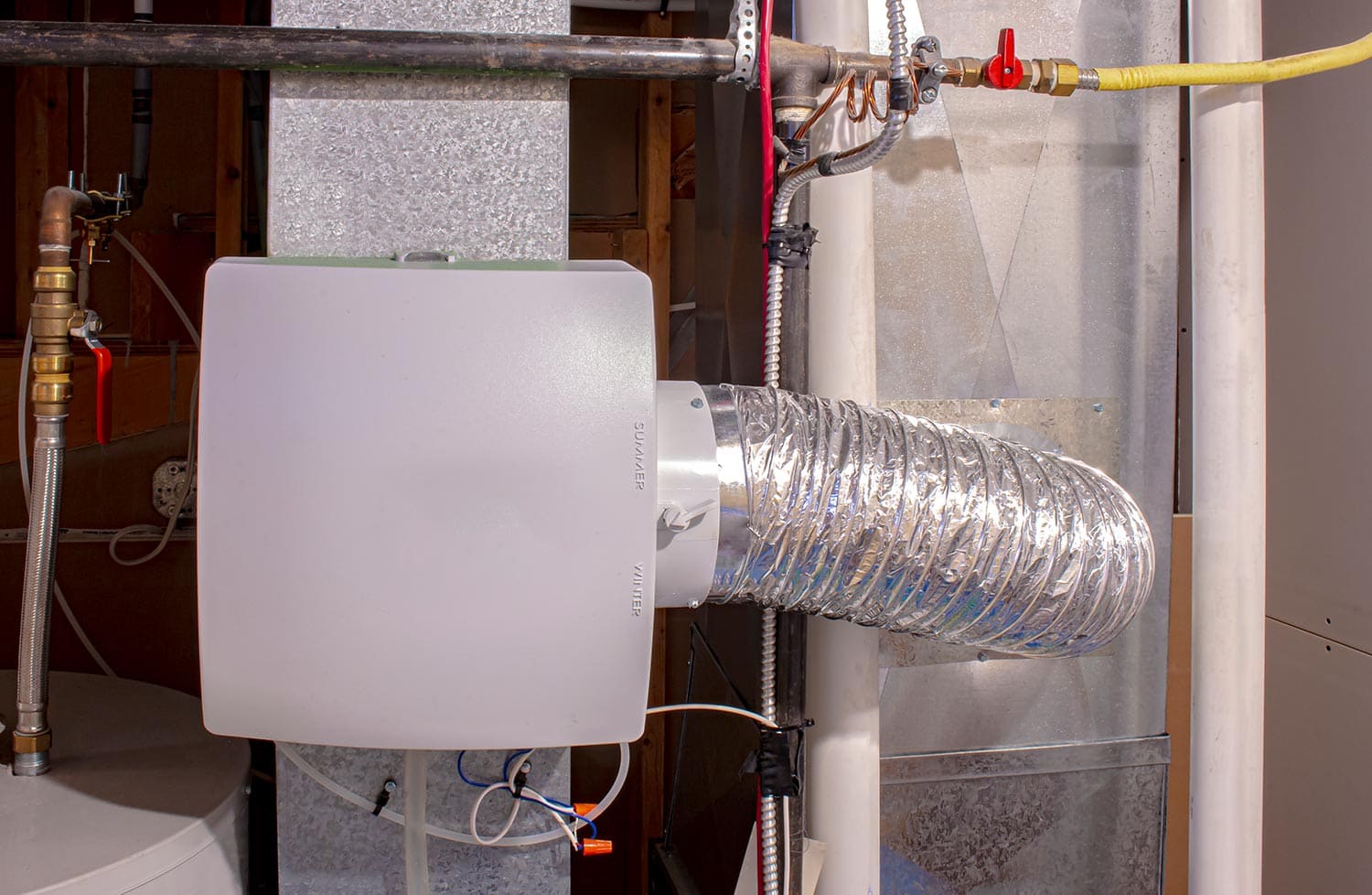
Cleaning your air exchanger filters is part of its maintenance. If you allow the filters to be filled with dust, dirt, and other contaminants, they would no longer be able to trap other pollutants in their mesh fibers. Instead of removing harmful particles from the air, they would be a source of pollutants since they could only hold so much dirt.
There would come a time when they would need to cough up all the dirt they held so that they could breathe or allow air to pass through.
You shouldn't have to wait for this to happen. Because when it does, you'll be breathing in polluted air inside your home. This will trigger allergies, asthma attacks, and allergy-like symptoms even in those without these conditions.
To prevent this from happening, make sure to clean your air exchanger filters regularly. It is recommended that you clean the secondary filters or pre-filters (the ones at the end of the air ducts) every three months, while the core filter needs to be vacuumed and washed twice a year.
Some also put filters behind the intake and exhaust vents, and these should also be cleaned quarterly as well.
Of course, when your air exchanger deals with more contaminants, you would need to clean the filters more frequently. This depends on your particular circumstances, so make the necessary adjustments regarding the cleaning schedule.
Should you leave your air exchanger on all the time?
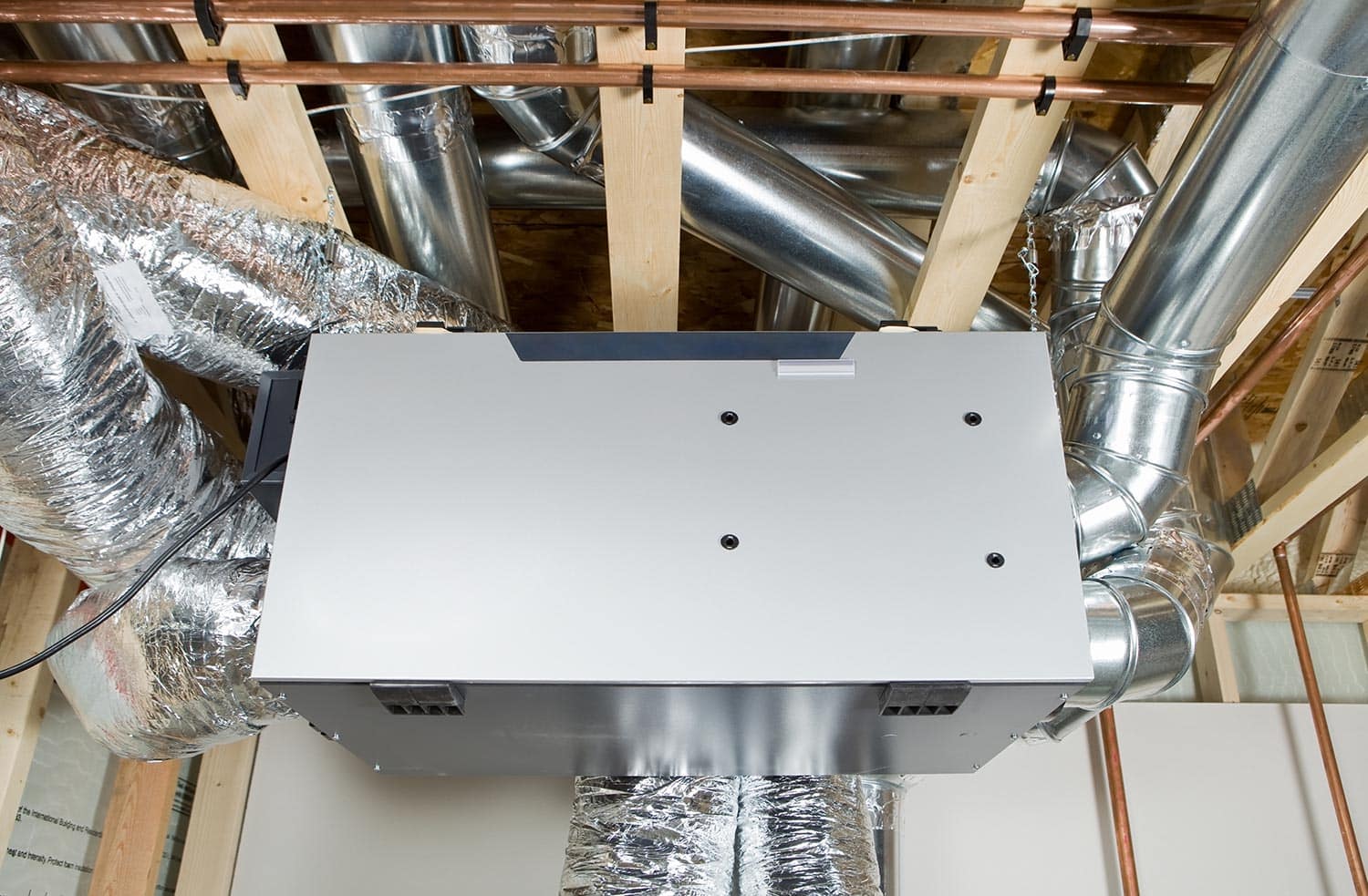
Final Thoughts
You can clean most parts of your air exchanger by yourself. Do this regularly to optimize the benefits of this appliance to make your home cleaner and healthier.
For more cleaning how-tos of your HVAC system, you may visit the following links:
How To Clean The Filter On Your Central AC
How To Clean A Portable Air Conditioner [Including Coils And Water Tank]
